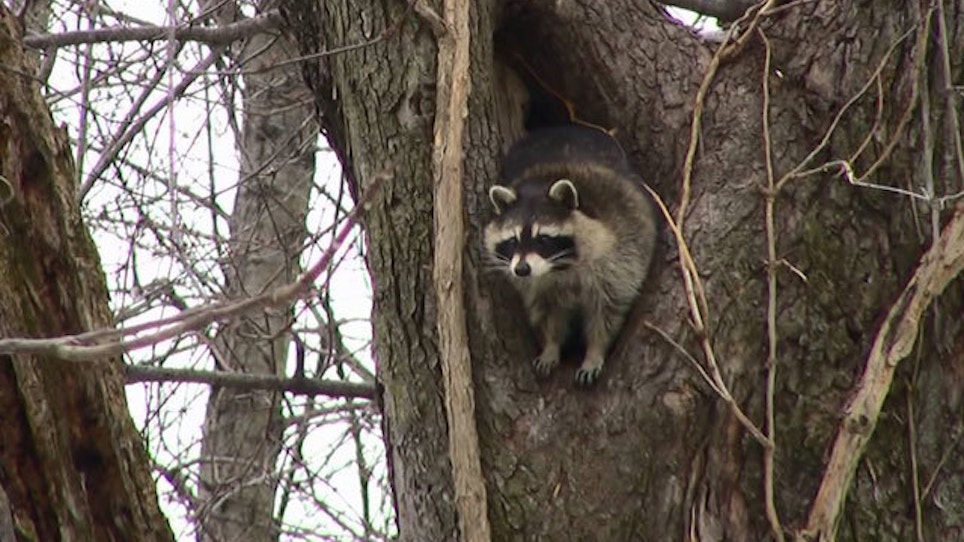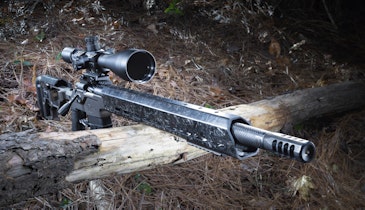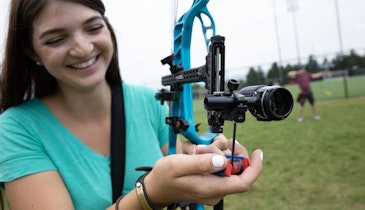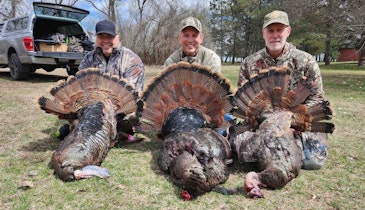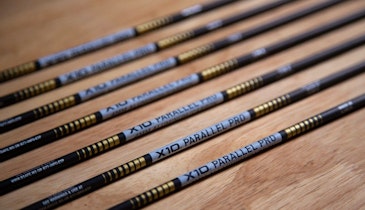The weatherman was predicting a warm-up, which was just what we had been waiting for. It was early January, and a nasty snowstorm dumped over a foot of new snow while temperatures plummeted to bitter cold. For six days it was below zero, then it warmed to the high single digits. The next day it got to the mid-teens, and the weatherman was predicting 30 and above to last for several days before it dropped again.
I have been calling raccoons in the daytime for more 25 years and have learned that the weather is a very important factor in having success. We always have a better response to our calling just before a storm or just after an extended cold spell. In my early years of calling, I went out in all weather conditions and at both ends of the thermometer to see what were the best conditions to get raccoons to respond to the call. I found that they will respond in almost any weather conditions, but seem to respond best in milder weather and with the temperature near the freezing mark. If it’s bitter cold, they are slow to respond, and if it’s real warm, they don’t respond very well.
We started the day with over an hour’s drive to get to a small river that had lots of trees on both sides for nearly a mile before it dumped into a larger river. When we parked off to the side of the landowner’s field driveway, we immediately spotted two sets of fresh coon tracks coming from the road and heading down a trail along the river. We thought that was a sign of good things to come, so we quickly got our gear on and started on the trail. We followed the tracks for several hundred yards before they led us to a den tree that the coons had climbed, but then descended and continued on. The tracks led us to three more den trees they had investigated but continued on down the river.
David stayed on the tracks, but I split off to the side to try to find other trees. It wasn’t long before I found another set of coon tracks to follow going in the same direction as the others. Up ahead I could see a large maple tree that had several dens high up. I could see David working his way to the same tree. At the base of the tree we found lots of fresh tracks and a well-worn trail leading to another close-by maple. The second tree also had a couple of nice-looking holes in it. We decided we needed to set up and call these trees.
We always set the call at the base of the tree on the opposite side of where the hole is. We want the coon to have to come all the way out of the hole when it’s looking for where the sound is coming from. At this site it was hard to decide where to place the call because there were so many holes facing in different directions. We figured it out, and I concealed myself behind some brush near the river bank while David went behind a smaller tree opposite of where I was at.
As soon as the call started, I had a coon look out of a hole high up on my side of the big maple. I got my crosshairs on it so I could get it as soon as it was all the way out. Just before it was completely out, I heard David shoot and heard the thud of a coon hitting the ground dead. My coon hesitated briefly because of David’s shot, but then it came all the way out and I dropped it with an easy shot to the head. Then I heard David shoot again but didn’t hear a thud, so I quickly scanned all the holes to see what he might have been shooting at. I didn’t see anything, and after a couple more minutes of calling, I saw David get up and go over to the caller and turn it off. Turned out he had been watching another coon that showed itself from the same hole he had got the first one from. While he was waiting for that one to come all the way out, another coon came out from another hole and was scrambling to another hole when he took a quick shot at it and missed. We know we can’t get them all, and we were feeling pretty good about these two. They were both big coons with perfectly prime coats, and we had only been hunting for about half an hour so far.
We always skin the coon where we shoot them so we don’t have to lug the whole coon around. I carry bread sacks in my pack, and we place the fresh pelt in a bread sack and secure it with a twist tie. It keeps everything neat and clean in the backpack and in the freezer when we get them home.
Within the next hour we made two more setups without any luck before we finally found another really good tree. This tree was a blow-down with the main trunk snapped about 6 feet up from the ground but still partially attached. We could easily see the hollow end of the log, and there were numerous muddy coon tracks coming and going from the tree. It was too high up for us to see into the log, but we felt this would be a good tree to call.
David placed the call back about 10 feet from the open end and directly under the log, then we settled back to wait. It didn’t take long before we had a coon peering out from the end of the log. It didn’t seem to want to come out until another coon forced its way out next to the first one. That also prompted the first one out, and we got them both as they climbed to the top of the log. We stayed in place without moving, and less than a minute later, another coon showed itself and climbed out. It died before it got to the top of the log. Less than a minute later we got a fourth one, then a fifth one and a sixth one, all about one minute apart. We let the call run for another three minutes before we turned it off. Wow! We had six coons at this setup in about 10 minutes. It took us longer to skin them than it did to harvest them. This time I told David that I wasn’t going to carry them for the rest of the day, so we concealed them and the first two under some nearby brush and logs to pick up on our way back.
Then we were off looking for more trees. Within half an hour from that site we found another huge maple tree with numerous den holes. After less than a minute of calling, a coon responded by sticking its head out a hole and looking around. Then it went back down for a short while, then looked out again. It peeked out like that three times before I saw it again. The last time it looked out from a different hole but finally came all the way out. I wasn’t in a very good position for a shot but thought David was. Apparently he wasn’t either, because he waited until the coon was almost to the ground and a little more on his side of the tree before he finally shot it.
About an hour and two more unsuccessful setups later, we reached the big river and found another likely looking tree on the point. This was a tall cottonwood tree with a long, deep scar running down the trunk from a long-ago lightning strike. The slit had rotted and made for a good denning site. We saw two coons when the call started, but only one came out far enough for us to get it. The other one moved up the slit out of sight, and we never saw it again. Now I had two coons in my backpack and was thinking about how heavy the pack would be at the end of the day. I told David we could hunt down the river for about an hour before we needed to start back.
It took us nearly an hour to work down the river to what turned out to be our last setup. Before we got there we called three more trees without seeing any more coons. We almost passed up this tree because it didn’t look very good. The tree was covered with poison ivy vines, and we had to look close to see a couple of den openings behind the vines. David could see a coon sleeping in a shallow, open-sided den before we even started the call. At first the coon didn’t even move, and I was beginning to think it was already dead and frozen in place. Then it slowly began to stir and move around. It finally looked out but didn’t seem a bit interested. It laid back down and appeared to go back to sleep. After another minute of calling, David turned the call off and switched the tape from a raccoon fight sound to a coon puppies sound. When the call started again, the coon immediately woke up and started climbing up to the top of the tree. We both shot at the same time and it came crashing down.
We made one more unsuccessful call setup before we got back to where we had stashed the first eight coons. David offered to carry some of the coons, but I said I could handle it. I should have taken him up on his offer, because I was plum wore out by the time we got back to the truck. It had been a long hunt with nearly seven hours in the woods. We had 11 coons for all our effort and considered it a very good day.
A few final comments before I end this article. We hunt nearly every day possible, weather permitting, between mid-December and the end of January when our season closes. If you hunt like I have described, you will be getting lots of exercise when most people are sitting at home gaining weight. It’s a beautiful time of the year to be out there enjoying nature. When our season is over, I still continue to hunt, only I leave my rifle at home. Now I carry a camera and a note pad to record the location of new den trees I find. It makes next season a lot easier.
Don’t expect to get all the coons that you see or assume there will be coons at every setup. On this hunt we called at 12 different sites and harvested coons at five of those sites. We also passed up a lot of trees that to us didn’t look too good. Without all our past experience, we probably would have called most of the trees we saw. Experience is the best teacher, so get out there and start gaining that experience. Good luck!
